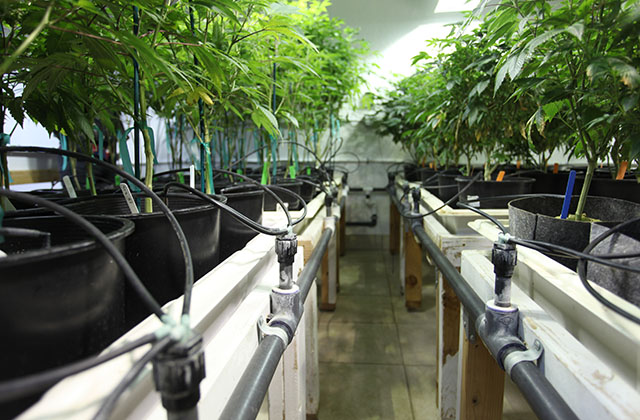Hey Nico,
I’m a new grower and it has been good so far, but I don’t use anything but water on my plants. Is that a good thing or not? – Marvin K. via NicosNuggets@hightimes.com
Howdy, Marvin! Welcome to very rewarding world of cannabis cultivation and thanks for your question this week.
In theory, if we could only feed our plants pure water it would be a great situation. In nature, plants drink only fresh rain water, but they get their nutrients from the Earth’s soil. When we move our plants indoors, the situation changes dramatically.
Plants need both water and mineral nutrients to grow and develop into healthy plants. Nutrients are to plants what vitamins are to humans. There are two ways plants can get these nutrients; First, they can come from the grow medium itself—just like it does for plants outdoors in nature—or nutrients can come in the form of a nutrient solution, whereby mineral fertilizers are mixed in with water and fed to plants during their watering cycles.

Organic nutrients for beginners.
It is important to note that in today’s hydroponic and indoor grow markets, many indoor mediums come pre-loaded with mineral nutrients, thereby reducing the grower’s need to rely heavily on adding nutrients during watering. However, most of these mediums’ nutrient levels are mild and last only a few weeks until your clones or seedlings have developed into more mature adult plants. The benefit here is that you don’t need to mess around with nutrient feedings during the young, delicate and tender ages, which helps reduce the risk of overfeeding, shocking or burning the roots of young baby plants.
Still, a majority of grow mediums will come sterile and inert, meaning they have no nutrient additives mixed into them. When this is the case, fresh water only will not suffice and nutrient feeding will be required to maximize the full potential of your plants.
Nutrients will help increase plant health and growth which will equal better yields and potency at harvest. But this does not mean growers have to load up on nutrients. In fact, in these situations, less is more. It is always smart to start with half the recommended dosing of the nutrients you choose with the understanding that you can always add more. However, if you use too much and shock or burn your plants, or create nutrient-lock up in the root zone from excessive salt build-up, it will be much harder to reverse those effects. To help prevent salt build-ups and the need for weekly flushing, many growers are now turning to much milder nutrients programs and using organic or veganic nutrients in their feeding programs.

Reservoirs; One for fresh water, one for dissolved nutrients.
Outdoor growers who actually farm in the Earth’s topsoil usually need to amend their soils before the start of their grow season, and many use composting and organic nutrient materials to bolster their topsoil. For those who grow outdoors in potted containers, the routine is the same as indoor growers if they are filling their containers with store-bought mediums. If they are filling pots with topsoil, they need to first check the soils quality to see if it needs mineral additives.
Most watering and feeding cycles occur on weekly cycles, but will varying depending on the grower’s preferences, the garden size, the mediums and nutrients used, and environmental conditions. A good general rule for beginners is to alternate days of fresh water and nutrient solutions.
One the first day, water once (or twice if short cycling) with your nutrient solution of choice. On the second day, use only fresh water. On the third day, allow the medium to dry out completely and become aerated. Then begin again on the fourth day.
This will provide two complete feeding cycles per week, allowing you to give your plants an added nutrient boost or a fresh water flush on the seventh, depending on how your plants are looking. And whatever you do, remember not to stress, have fun and read your plants health daily as they will tell you how they feel.

Irrigation lines bring both fresh water and nutrient solution from reservoirs.
Thanks for reading everyone and remember: Grow… And help the world grow, too!
















